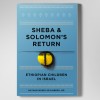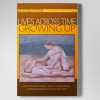Review of Joan Acocella’s “Once Upon a Time” New Yorker, July 23, 2012 [1]
Once upon a time, long ago and far away (but East of the Hudson), lived a brave reviewer who wrestled Grimmly with fairy tale bowdlerizers. This is the story of her feats, and how fairy tales still survive (in children’s hearts) in spite of some adults.
Acocella bravely takes on a raft of new interpretations or new versions of fairy tales, entirely of the Grimm variety, although the Perrault tales or Scheherzade (from Persian and Arabic and even French origins) we will show also are fairy tales. And, some of what she reviews under fairy tales are either fables (explicitly moral stories) or single-authored (such as the moving Hans Christian Anderson stories). It’s worth keeping our apples and oranges in different peck baskets.
Let’s begin with the differences amongst these categories, but from a children’s (and developmentally psychoanalytic perspective). Fairy tales are orally-transmitted stories told across generations, without clear single authorship. Usually the heroes/heroines are children or small animals who use their cunning (as they don’t have the strength) to overcome evil. There are moral themes embedded within such tales — such as how children or animals, if they restrain their impulses, use their good minds, can overcome adversity — but these are not explicit. Why not single-authored? Because these stories are transmitted across generations of time and from parent to child, they capture the major existential themes shared by cultures. Fairy tales appeal across cultures (not only generations): children are entranced by Scheherezade’s Sinbad the Sailor, Alladin and the Genie, as they are enthralled by Grimms’ Hansel and Gretel, Puss in Boots or Jack and the Beanstalk. or Perrault’s Little Red Riding Hood.
Single-authored stories — of necessity, we know as psychoanalysts — are more significantly colored by the inner life of the author. Would psychoanalysts be surprised that Hans Christian Anderson, writer of such tales as the Little Match Girl, who dies in the snowy cold, was plagued by severe depression? Listen to a summary of his Little Mermaid (not the Disney version, the original), in which
“The Little Mermaid, longing for the prince and an eternal soul…visits the Sea Witch, who sells her a potion that gives her legs in exchange for her tongue …. once she becomes a human, she will never be able to return to the sea. Drinking the potion will make her feel as if a sword is being passed through her, yet when she recovers she will have two beautiful legs, and will be able to dance like no human has ever danced before. However, it will constantly feel like she is walking on sharp swords hard enough to make her bleed. In addition, she will only get a soul if she finds true love’s kiss and if the prince loves her and marries her … Otherwise, at dawn on the first day after he marries another woman, the Little Mermaid will die brokenhearted and disintegrate into sea foam.(Ital. added).
The Little Mermaid drinks the potion and meets the prince….(But) the prince’s father orders his son to marry the neighboring king’s daughter…
…The Little Mermaid’s heart breaks … thinking of the death that awaits her…before dawn, her sisters bring her a knife …. If the Little Mermaid slays the prince … and lets his blood drip on her feet, she will become a mermaid again, all her suffering will end …
The Little Mermaid cannot bring herself to kill the sleeping prince…as dawn breaks she throws herself into the sea…. “(Wikipedia)
Fairy Tale? Not.
Fables are barely disguised and generally short accounts with strong moral endings. For instance, those by Aesop, the Greek slave, who gave us the Tortoise and the Hare, or the Lion and the Mouse (who releases the lion from the hunter’s snare, The Goose that Laid the Golden Eggs; or La Fontaines’ twelve volumes of 17th century moral tales; and others such as the Fox and the (out of reach) grapes; the scorpion and the turtle who ferries him across the lake and is stung to death in return and others. These short accounts feel different; are more explicit, almost religiously-tinged, ending with stated maxims or morals. Not too kid-friendly.
Let’s hear what and with whom Acocella wrestles. Zipes, a professor of comparative literature, has written some twenty books on fairy tales. In his latest, for instance, he changes the ending of Rumplestiltskin. Remember him? He will let the Princess keep her new baby if she can guess his name. She finally does so and in the original tale, Rumplestiltskin, in great frothy fury stomps himself through the floor (and into whatever lies beneath)! Zipes has the Princess instead invite Rumplestlitskin to cohabit with her and the baby and they will have such a fine time. Yes. Imagine children wanting to hear that ending. Even adults like their heroes to vanquish well: Superman does in the evil doers; Batman outdoes the Joker and so on. Imagine having Batman hook arms with the Joker and stroll into the fog. That’s good for romantic Casablanca, not for Batman. Essentially, Zipes turns a fine fairy tale into a mundane fable.
Here’s another tale teller Acocella faces down. Angela Carter does her take on Red Riding Hood and the Wolf, entitled, “The Company of Wolves.” She has little Red Riding Hood remove her shawl and toss it into the fireplace…then draws “her blouse over her head; her small breasts gleamed as if the snow had invaded the room.” Then she disrobes the wolf. Then cradles the wolf’s head in her lap and …. picks his lice from his wool and… eats them. Carter ends her tale with Riding Hood sleeping “sweet and sound … in granny‘s bed, between the paws of the tender wolf.” (I kid you not; I take this from Acocella’s review). Read that to your kid? Not.
Okay, let’s get back to Bettelheim. Acocella has him at bat with two strikes against him by saying he was “notorious(ly)” and a Freudian. In fact, let’s say that Bettelheim, one of my teachers, who dedicated much of his life to caring for dispossessed kids, was a “Kidian”: about kids, he thought deeply and listened carefully and watched closely. Kids like their fairy tales fairly unadulterated: animals or other kids (long ago and far away) are in danger. Hear what children relish. A Snow White envied by her aging stepmother, pitied by the hunter sent to cut out her heart; saved in part by her efforts caring for seven dwarfs, learning how to care for others, until she sleeps through (adolescence) until wakened by her Prince. Hansel and Gretel, sent off to starve in the woods by famished parents; Gretel being clever enough to trick the witch and save her brother. Puss-n-Boots whose cleverness gains him power, wealth and wins the Princess for his beloved, but impoverished master. Or Scheherazade who uses her courage and creativity and clever mind to cure her homicidal husband over 1001 nights. And don’t try to change the fairy tale in the retelling: kids like them consistent, just fine, thank you.
The Princess Bride, a movie by Rob Reiner, captures cleverly how powerful is the intimacy between teller and listener. An ill perhaps nine year old is told by mother that Grandpa (Peter Falk) is coming to read him a story. The boy doesn’t want stories: he’s busy with his video game. But, Grandpa pulls out a book given to him by his father, read to him, which he read to the boy’s father. He begins the story with beautiful girl about to kiss the handsome but lowly farm hand: the boy’s yuck interrupts the tale. Undeterred, Grandpa interrupts the kiss for the young man to set sail, then captured by pirates; the girl in turn kidnapped by evil doers; held hostage to be married by the rival king, who will kill her on her marriage bed. Watch it again to see not only the story, but the playful back and forth between the story and Grandpa and grandson, who now can’t abide interruptions. This is another ingredient Bettelheim noted: fairy tales are to be told by adults to children; in fact, in olden times, some adults believed in these tales perhaps as strongly as their children. Bettelheim hits it out of the park on the third pitch, reaches for the sky.
Children — small, vulnerable, less powerful than moms and dads, often feeling less powerful than their angry impulses (towards a sibling, towards a parent) — have a residual secret ingredient to manage the bigness of the world: their imaginations. Give them fairy tales, told with feeling, by adults with feeling. Don’t manicure the tales; expurgate them, nor elaborate them for adults‘ needs. Let fairies be “dancey” a bit longer in children’s lives.




I really enjoyed reading this! thank you.
I totally agree, though find fairy tales in general so difficult to read to young (and sensitive) children (maybe because I find many of them difficult to handle myself…).
Keren
Fairy tales are only one way to enjoy life with them
.Enjoy your children in every way.